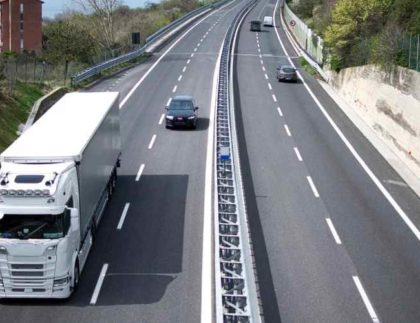

The provisions of the mobility package have introduced significant changes to the working time of drivers who perform their duties within the European Union. These changes apply to both bus and heavy transport.
When and under what conditions is it possible to extend a driver’s driving time? In what situations can deviations from the binding regulations be applied? All of these questions will be answered in the article!
How has the mobility package affected the possibility of extending driver working hours?
Grounds for extending driving time are provided by Article 12 of the Regulation No. 561/2006 of the European Parliament and of the Council. Changes introduced in connection with the mobility package allow the daily and weekly driving time to be extended by 1 or 2 hours under exceptional circumstances.
When and under what conditions can the driving time be extended by 1 hour?
Article 12 of the Regulation stipulates:
- “Provided that road safety is not thereby jeopardised and to enable the vehicle to reach a suitable stopping place, the driver may depart from Articles 6 to 9 to the extent necessary to ensure the safety of persons, of the vehicle or its load. The driver shall indicate the reason for such departure manually on the record sheet of the recording equipment or on a printout from the recording equipment or in the duty roster, at the latest on arrival at the suitable stopping place”.
It should be emphasized again that driving time extension is not the norm and is only admissible under exceptional circumstances. One should also keep in mind that a driver using this exemption cannot exceed the limit of 4.5 hours of continuous driving (that is the maximum driving time) and the rest period after returning to base or place of residence must be at least 24 hours.
What circumstances are considered “exceptional”?
In order for a driver’s working time to be extended, there must be exceptional circumstances that require it. This applies to situations that neither the driver nor other persons involved in the execution of the order (such as the consignor or the carrier), could have foreseen before the transport began. An exceptional circumstance that warrants extending driving time, for example, is a traffic jam caused by a traffic accident.
What rules apply to extending driving time by 2 hours?
The Regulation stipulates the same conditions when it comes to extending a driver’s working time by 2 hours. In addition, the driver must also:
- take a 30-minute break immediately before extending their driving time;
- use their regular weekly (45-hour) rest period at their place of residence or at the company’s operational center.
How to compensate for the driver’s extended working time?
The Regulation also specifies how the mandatory length of rest periods is affected by an increase in the driver’s working time:
- “Any extended work period must be compensated with an equivalent rest period.”
Consequently, any extension of a driver’s working time must be compensated with a single rest period lasting at least 9 hours. Such rest must take place before the end of the third week following the week in which working time was extended.
In what situations are deviations from standard working time allowed?
A very important factor are the circumstances under which a driver exceeds the applicable driving time standards in order to return to base or home. What are the most important rules?
- exceeding the limits is only allowed in exceptional situations – such as those related to adverse weather conditions, traffic congestion or delays at loading and unloading locations. Issues that could be easily foreseen at the transportation planning stage are not included;
- exceeding the weekly driving time is allowed (by no more than 56h, which results from the driving time used in the preceding week, assuming the applicable normative value of the two-week driving time);
- the two-week driving time (90h) must not be exceeded.
How to properly document extended working time?
To successfully invoke the provisions of Article 12, the driver must describe the circumstances and reasons for the increase in driving time on the tachograph printout. How should the deviation be described?
As set forth in the Regulation, the description must be drafted by the driver himself/herself on the record sheet, a printout from the recording device or on a work plan. It should be made “at the latest upon arrival at the destination or a suitable stopping place”.
How to avoid penalties for improperly extending working hours?
In order to avoid penalties related to the extension of the driver’s working hours, it is necessary to prove that the situation was due to extraordinary circumstances and at the same time did not adversely affect road safety. An argument for invoking Article 12 would therefore be the exceptional circumstances mentioned earlier, such as traffic jams, breakdowns, adverse weather conditions, lack of parking spaces, or a change in a previously scheduled loading or unloading location.
Attempts to avoid extended driving hours should be documented with a printout from the digital tachograph. Activities recorded on the printouts related to the attempts made to find parking spaces will be an additional argument to substantiate the driver’s story. The circumstances should be described in detail and Article 12/561/2006 EC should be explicitly mentioned.
Legal provisions do not require the controlling officer to withhold imposing a penalty. After evaluating the factual circumstances, the evidence presented by the driver and the exceptional and unforeseeable circumstances cited, the inspector has the discretion to assess freely whether these circumstances actually justify a deviation from the applicable standards.
For this reason, in the face of potential inspections, especially outside the country, we recommend taking care of additional documentation – beyond the description on the printout. Such documentation may include, for example, photocopies of shipping documents confirming a change in the place of unloading, or photos showing congestion on the main route that forced the driver to take an alternative route.
Careful scheduling of transportation tasks, allowing adequate time reserves for their completion, is crucial for avoiding penalties. It is also important to systematically improve drivers’ competences through training on the applicable norms for driving time, breaks and rest. Implementation of the aforementioned tasks must be supervised both during and after the carriage takes place.








